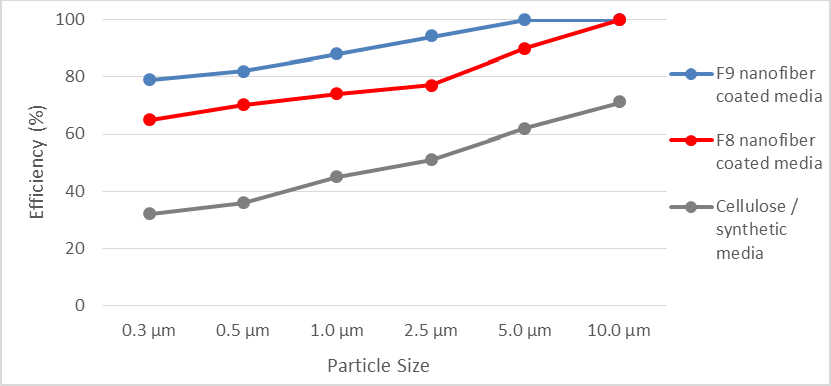Why Nanofibers Are Ideal for Filtration
Nanofibers are widely used in filtration due to their high surface area, small pore size, and high porosity. These properties make them highly effective in air and water filtration, including applications in air purifiers, water filters, and face masks.
Nanofibers in Air Filtration
Nanofibers help remove particulate matter, viruses, and bacteria from the air. They offer high filtration efficiency, low pressure drop, and a long service life, making them suitable for air purifiers and HVAC systems.
Electrospun nanofibers improve air filtration by providing a smaller pore size and higher specific surface area than traditional filters. These characteristics enhance particle capture and overall filtration efficiency.
Nanofibers in Water Filtration
Nanofiber membranes efficiently remove bacteria, viruses, and heavy metals from water. These membranes offer high flux rates, strong mechanical properties, and excellent chemical and thermal stability, making them ideal for water purification.
Nanofiber layers can be coated onto various filter substrates for use in automotive, power plants, and industrial air filters.
Performance Comparison: Common vs. Nanofiber-Coated Filters
The following figure compares the efficiency and pressure drop of a standard air filter versus a nanofiber-coated air filter. As shown, NanoSpin’s nanofiber-coated filter significantly improves filtration efficiency while maintaining a minimal increase in pressure drop.
Comparison of efficiency between common air filter media and NanoSpin’s nanofiber coated air filter
Nanofibers in Face Masks
Nanofibers create highly efficient filter layers for respiratory masks. These masks effectively filter particles as small as 0.3 microns while maintaining excellent breathability. As a result, they are widely used in healthcare and industrial settings.
Conclusion
Nanofiber technology enhances filtration performance across multiple applications. Compared to traditional filter materials, nanofibers improve efficiency and durability, making them an essential part of the filtration industry.


